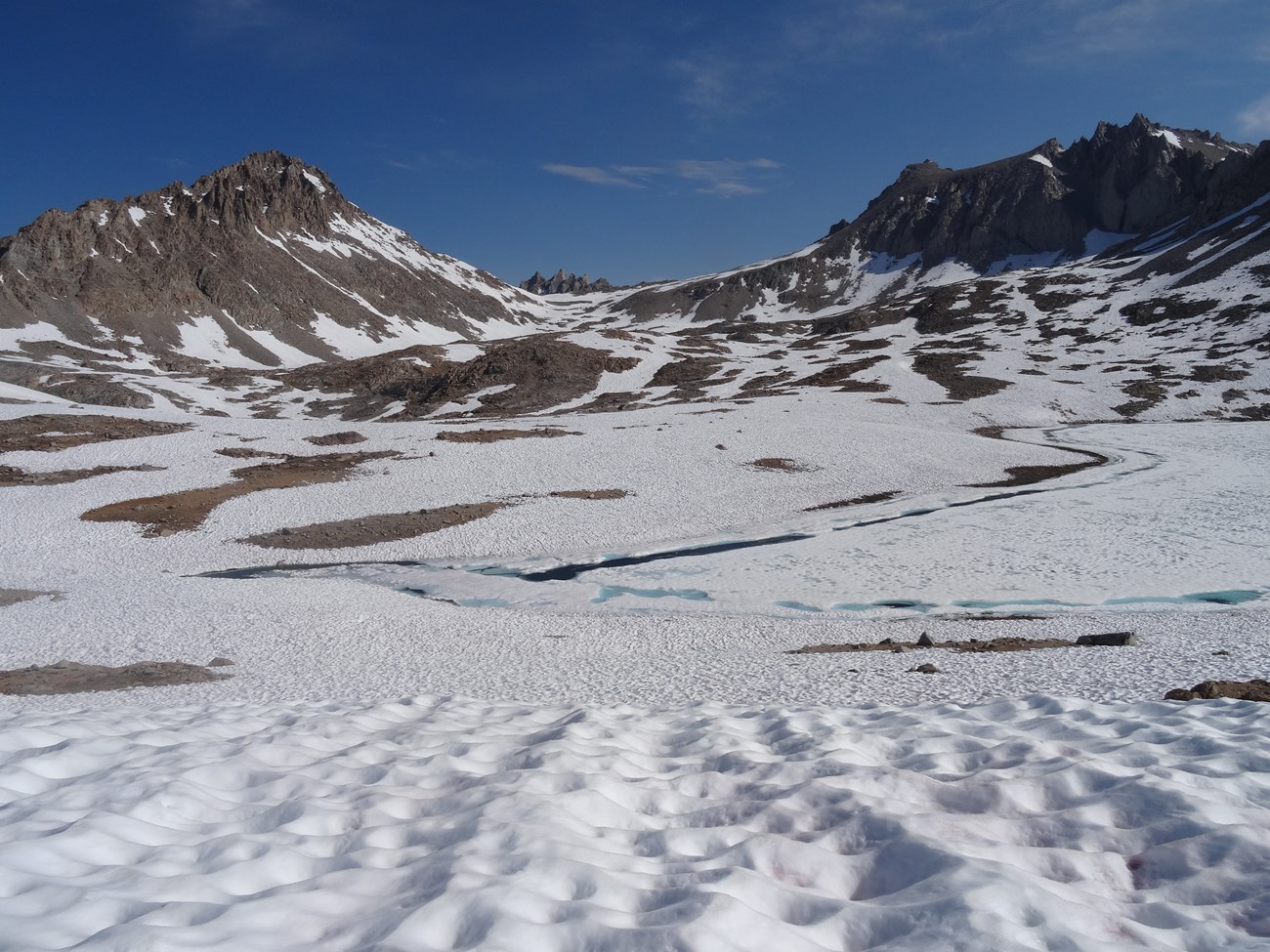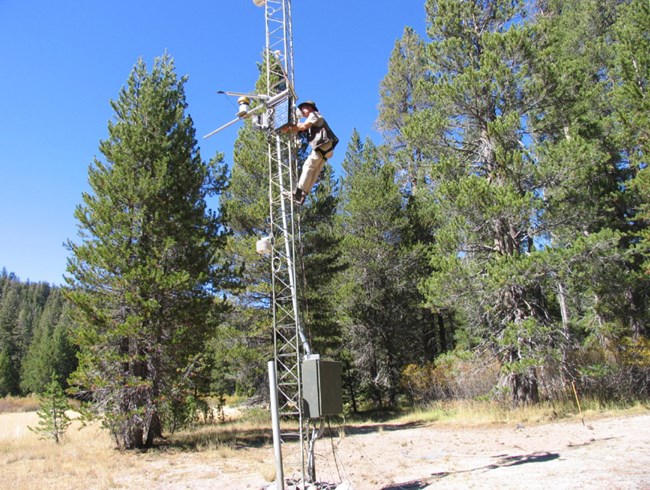
Photo: Mandy Holmgren, The Institute for Bird Populations
Overview
Climate is a major driver of Sierra Nevada ecosystems, with temperature and precipitation being the most important factors. Current patterns of vegetation, streamflow, fire regimes, nutrient cycling, soils, and animal distributions are determined largely by cumulative effects of past and present climates.
Climate change is anticipated to have pronounced effects in the Sierra Nevada. Warming temperatures are already resulting in more of the region's precipitation falling as rain rather than snow, decreasing snowpack water content, and an earlier melt of the snowpack. The Sierra Nevada snowpack has a critical role in providing the region a natural reservoir that releases water gradually as snow melts through the spring and early summer seasons.
Tracking changes in both short-term weather conditions (such as current temperature and recent precipitation) and long-term climate patterns is critical information for park managers. For example, accurate climate and weather data inform decisions related to fire management, pack stock grazing in meadows, non-native plant control, and park facilities opening and closing dates. Scientists and managers use climate data to better understand and interpret changes in other indicators monitored, such as river hydrology, bird populations, and forests.

NPS photo
Approach and Objectives
Using a subset of existing weather stations in Sierra Nevada parks, the Sierra Nevada Network Inventory & Monitoring Program will monitor and report on:
- Temperature – Determine the status and trends in monthly and annual averages of daily minimum and maximum air temperature at the local scale.
- Precipitation – Determine the status and trends in monthly and annual accumulated precipitation, including extremes, at the local scale.
- Drought – Determine the status, trends, and periodicity in monthly and annual drought at the regional scale.
- Snowpack – Determine the status, trend, and periodicity in seasonal snow water equivalent at the local and watershed scale.
- Streamflow – Determine the status, trends, and periodicity in daily, monthly, and annual streamflow at the local scale.
The Sierra Nevada Network uses three different types of weather monitoring stations in the parks:
Publications and Other Information
Source: NPS DataStore Saved Search 989. To search for additional information, visit the NPS DataStore.
Source: NPS DataStore Saved Search 1009. To search for additional information, visit the NPS DataStore.
Source: NPS DataStore Saved Search 1003. To search for additional information, visit the NPS DataStore.
Last updated: April 22, 2025
